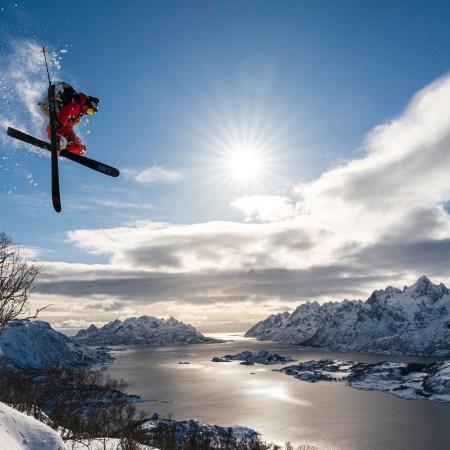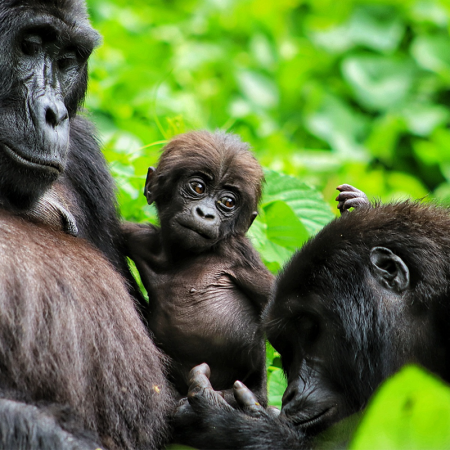
Nature lends itself to some incredible photographs, from majestic mountains, to erupting volcanoes, to crashing waves. But there’s nothing quite like the aurora borealis. That said, it can be a bit more of a challenge to capture the northern lights than it is to sit on the beach and wait for a wave to fall. Bit if you’ve ever thought about heading north to brave the cold, the next couple of years will be some of the best to do so, at least for the next decade.
“We just passed the lowest solar cycle during which there’s light solar activity, meaning there’s a slim chance of seeing the aurora,” says Stanley Aryanto, a travel photographer who offers mentorship programs and photography workshops on astrophotography and other subjects. “The cycle is approximately 11 years, and we’re just starting to get more solar activity, which means there’s a better chance of seeing the aurora.”
The sun goes through solar cycles, and it happens when the magnetic field flips and the poles switch places. Sunspots get more active during this time, and that has an impact on what people see down on Earth. Put simply, the more sunspots, the stronger the aurora, known as the solar maximum.
Yet you don’t have to be an astrophysicist to know that stronger northern lights mean better photo opportunities. From gear, to camera settings, to the all-important location, these photographer tips will ensure you set yourself up for the best shot.

Finding the Right ISO, Shutter Speed and Aperture
“Shooting the aurora isn’t like shooting the Milky Way,” Aryanto says. “The intensity of aurora fluctuates, and therefore we need to be able to adjust our settings accordingly. This is why I tell all my mentees it’s important to have a solid foundation in photography. There’s great value in investing in a photography fundamentals course to ensure you understand the exposure triangle and how to shoot in manual.”
When it comes to aperture, there’s really just one important thing to keep in mind: the bigger the better. Start by setting the aperture to the widest position, and adjust your shutter speed to how bright the lights are. Longer shutter speeds of 30 seconds allow the stars to shine through, and you can lower the ISO for less noise interference. Light pillars, on the other hand, can be captured with shorter shutter speeds of one or two seconds, which “freeze the moment before the aurora moves and you’ll be able to capture the pillars within the aurora,” Aryanto says.
If you’re lucky enough to have a full moon at your back, you can use a lower ISO, between 800 and 1250, with an f/2.8 aperture.
What to Include in the Frame for Dramatic Photos
Even the best aurora photos can lose impact without a little bit of situational context. Including the natural environment in your shot can help give perspective. “To frame your photos, you need to find foreground interest, whether that’s a snow-covered forest, a mountain range or a lake, as viewers need this to get a sense of scale when they look at your photos,” says Tim Daniels, a photographer who has written a guide on northern lights photography.
Focusing on a person or object closer to the camera with the lights in the background can take a little more finagling. Photographer Megan Posein suggests having someone stand at the spot you’d like to highlight in the foreground with a flashlight shining into the camera, and then manually adjust the focus until the light isn’t blurry. “It’s not hard, but it does take some patience and practice,” Posein says.
Keep in mind that you’ll need to adjust your lens accordingly. “If you are going to be shooting from elevation, like from a summit, then a 24-70 lens would be best,” Aryanto says. “If you’re shooting from ground level, like by a lake, and want to incorporate the foreground right in front of you, then a wide lens would be ideal.”

Capture the Stars Alongside the Lights
The brightness of the aurora can easily wash out the stars. “The only way to capture the stars alongside aurora borealis is when they are apart from each other,” Aryanto says. “The best way to do that is by taking a panorama photo.”
The lights shine in the north or northeast, so he suggests setting up a panorama from the east or southeast to the north, or from the southwest to the north to capture the Milky Way with the aurora.
Travel to the Right Place for the Best Chances
Each region where the lights show up have their own benefits. The Canadian Rockies, where Aryanto shoots, feature Strong Thermal Emission Velocity Enhancement (or STEVE, which has purple and green in the lights) and dramatic mountain and lake landscapes.
Alaska, Canada, Greenland, the Svalbard Islands, Iceland and Lapland in the northern regions of Norway, Sweden and Finland (particularly around the town of Abisko) are all places where you can expect to see the lights. The most important thing to remember is that inland regions away from artificial lights are typically better because there’s a higher chance of clear skies.
“In Alaska, the further north you are, the better because of the location of the aurora oval,” Alaska-based photographer Sage Dudick says. “Which is why Fairbanks in Interior Alaska is such a hot spot for aurora viewing compared to Anchorage, but you can still get amazing shows all over the state.”
In most areas of Norway or Iceland, you can expect a strong lights showing twice a month. But in the far north of Norway past Tromsø, at least a faint shimmer can be seen most winter nights with stronger showings three or four times a month during the solar maximum, notes journalist and photographer Mirko Carnevale of Norwegian Routes.
Regardless of where in the world you’re shooting, it’s best to go with a guide who knows the area or to take a pre-trip, possibly during the day when it’s easier to get around. “Location scouting is a good thing to do before the northern lights appear so that you aren’t scrambling at the last moment,” Posein says. “Find a spot with a good clear view of the sky that’s facing north. Leave any city or areas with light pollution, as it can interfere with your long exposure.”
Keep an Eye on the Weather
It’s impossible to predict exactly when the lights will be best for photos. Nature does as nature wants, and sometimes that means giving only a couple hours heads up before there are any signs of a bright and colorful aurora. One thing you can better plan around, however, is the weather, and it’s important to check that there won’t be any clouds blocking your view.
“Windy.com has a good cloud forecast on its site,” says Jani Isokangas, a photographer with Uncharted Society’s first Finland outfitter Lapland Safari. “Otherwise, it just depends on the mood and what you want from the photos. In autumn, the place to be is near water to get the reflections, and in the winter it’s the snowy forests.”
Local groups can come in handy here if you’re not as adept at reading weather charts. In the Alberta Aurora Chasers Facebook group, for example, people will often post when the conditions are favorable. Space Weather is also a good site to check.
Pick the Right Camera
The more expensive the camera, the higher likelihood for a good shot, but anything that shoots in manual mode can work in the right conditions, Aryanto says.
Not all photographers agree, but in a pinch you can use your phone if it’s a newer one with a good camera (with the caveat that the images won’t be as clear or crisp as those from a DSLR or mirrorless camera). “Phones older than about five years really struggle to capture the aurora, but modern high-end phones like iPhones can capture the northern lights as well as DSLRs can,” Daniels says. “You don’t even need to change settings now — the phone handles everything and gets a great photo, provided the aurora is strong enough.”

Gather the Essential Gear
After the camera itself, the lens is what matters most. Carnevale suggests a Canon L Series like the EF 14mm f/2.8L II USM, or the AF-S NIKKOR 14-24mm f/2.8G ED if you have a Nikon. More affordable lenses like the Tamron SP 17-50mm f/2.8 will also work.
“If it is very cold, my advice is to assemble the tripod, test the shot and the settings, and then disassemble the camera and keep it in an inside pocket of the jacket or in a place as warm and dry as possible, so as to avoid condensation on the lenses and electronic problems,” Carnevale says. “You will only mount the camera at the point of shooting, but this requires some training beforehand so you’ll be able to do it quickly.”
Even the steadiest hands need a sturdy tripod at these shutter speeds. “You don’t want to put a $4,000 camera body and lens on a cheap tripod, especially when it can get windy and you might be on uneven terrain,” photographer Mikkel Paige says.
There can still be some shake from pressing the button, however. A tethered remote (wireless can be finicky in cold weather) will do the trick, as will setting the camera on a two-second self-timer.
It’s not just camera gear that you’ll need. The aurora borealis comes out in some of the coldest parts of the world, so dressing appropriately is paramount. “I suggest a quality pair of gloves that slip onto your coat so you can easily take them on/off as needed to control your camera,” Paige says. Alternatively, get a pair of touchscreen gloves. They’re often thinner, so bring a second pair that clips onto your jacket to wear in between clicking the camera or changing settings.”
Finally, a headlamp with a red light makes it easier for your eyes to readjust to the dark after each use.
At the End of the Trip, Expect to Edit
Even in the best conditions, don’t expect to automatically capture what you’ve seen in other photos. “I’ve seen super bright northern lights with a high Kp index of eight, and they still aren’t like edited photos, though Kp eight is pretty darn close,” Paige says. “Kp five or six is more typical, which would be considered an awesome show.”
That’s when it’s time to break out the editing software. “The most spectacular shots are often obtained by superimposing multiple images in post-production,” Carnevale says. “Because they move at different speeds and the Aurora Borealis is usually brighter, it pays to take two or more different photos for the Aurora Borealis and the stars. Then, once you are at home, you can merge the different shots with Photoshop.”
For more travel news, tips and inspo, sign up for InsideHook's weekly travel newsletter, The Journey.










